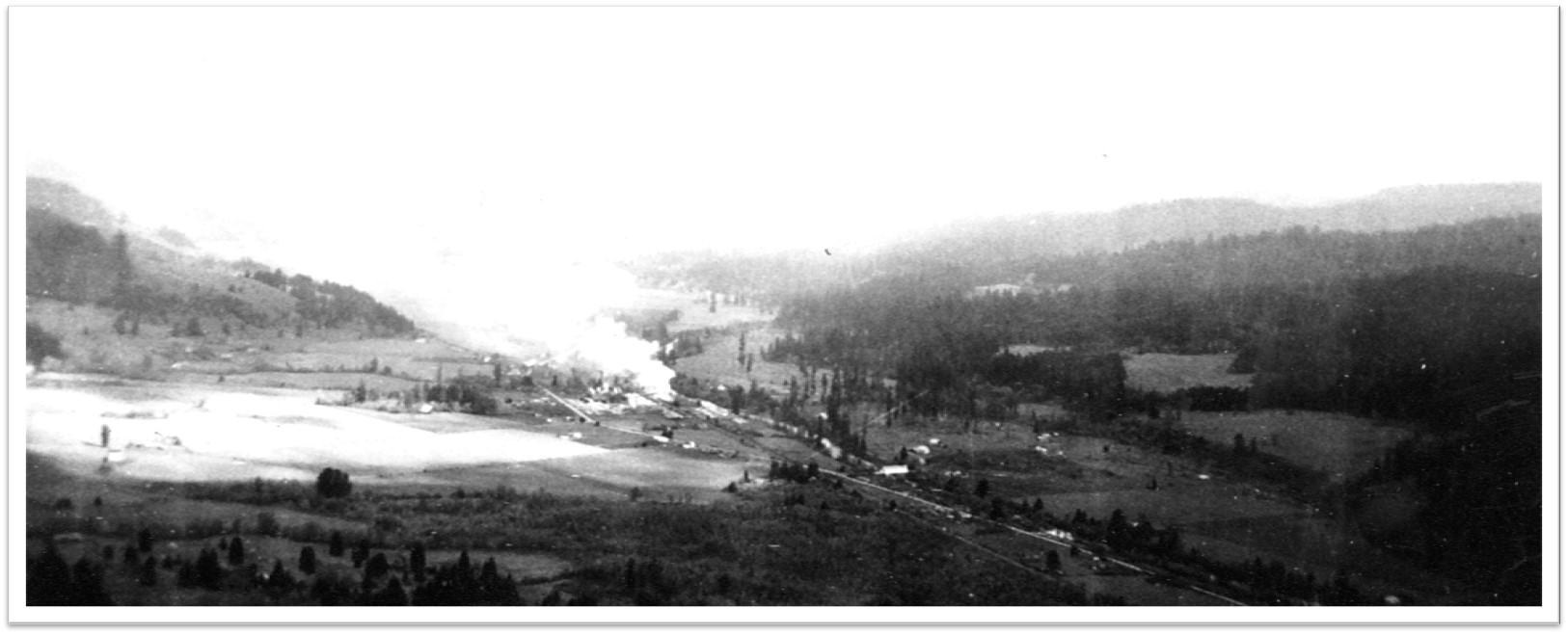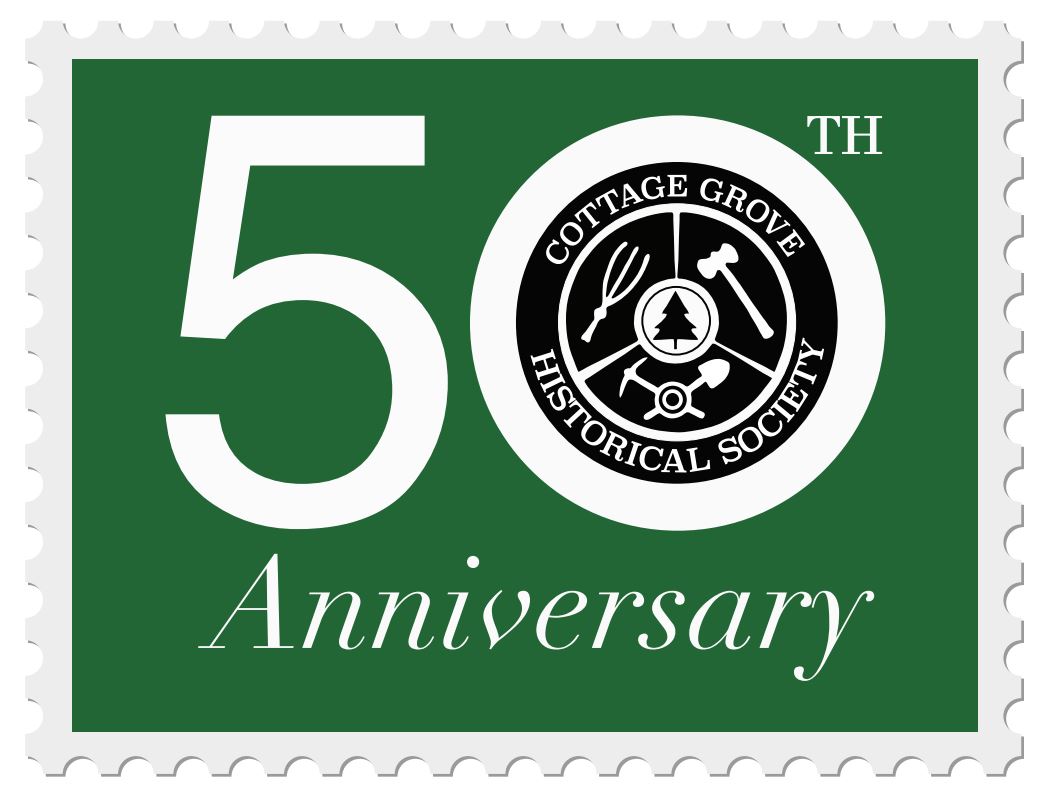During the summer of 2019 we displayed the following exhibit at the Cottage Grove Library. This tells the story of how Row River got it's name.
While we have been unable to identify the name used by native Kalapuya tribes, the river was simply know as the East Fork of the Coast Fork to the early settlers.
|
Clarks and Southwells Family Connections
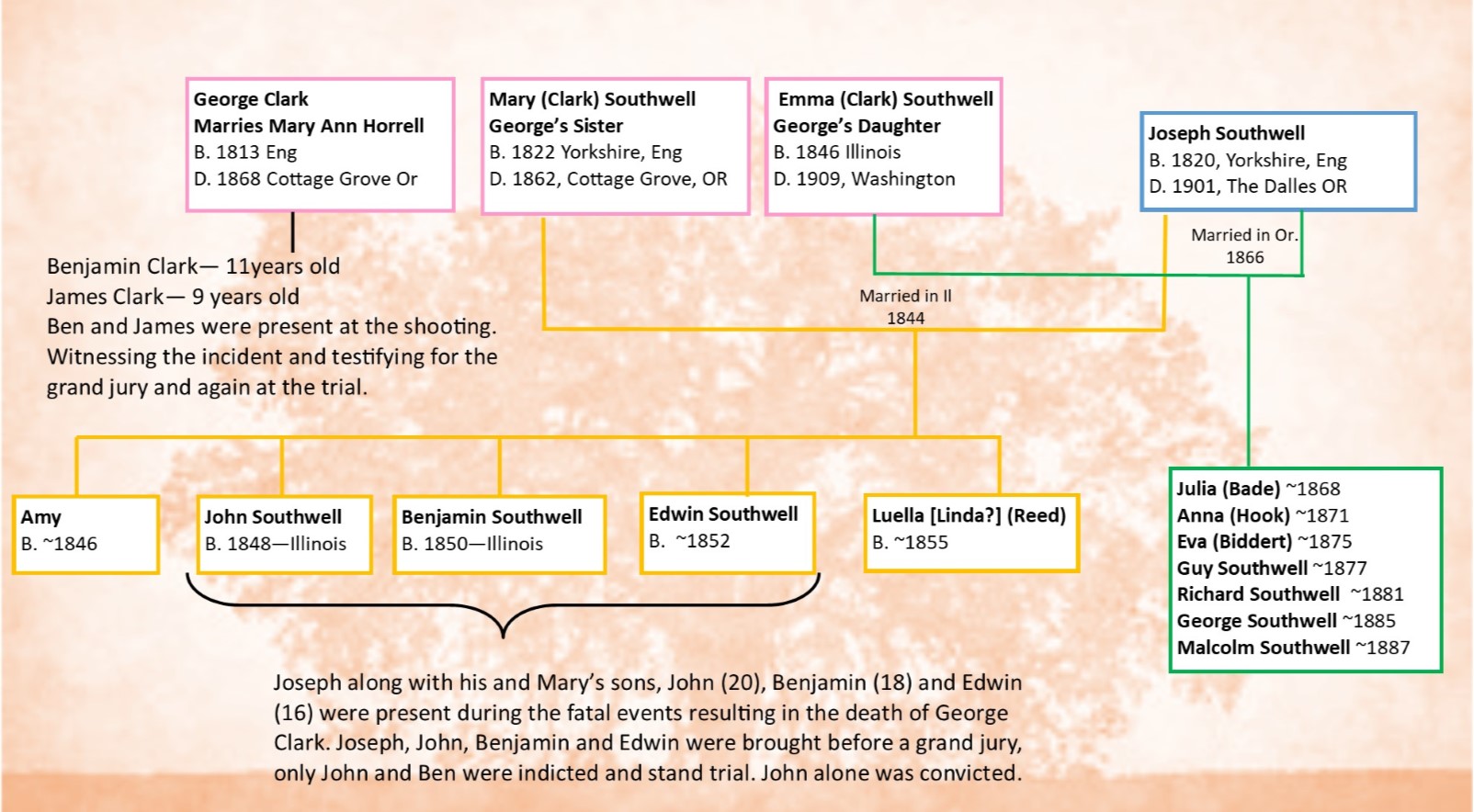
The Incident—The Known Facts
March 27, 1868
- George Clark sets out to gather his sheep. Sons, Benjamin, 11, and James, 9, tag along to help herd the sheep home.
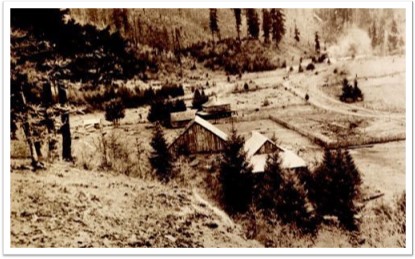
- The Clarks locate their sheep on or near the border of Joseph Southwell’s land.
- Joseph, John, Benjamin and Edwin approach the Clarks, three of them armed. George was also armed though his gun was never discharged.
- George is shot once in the back at an upward trajectory.
- Benjamin and James Clark return home.
- Mrs. Clark calls for help from neighbors, and requests the local doctor, but he is unavailable.
- Mrs. Clark and two neighbors take a wagon and collect George’s body.
- The group stops at the Southwell’s home to ask Emma Southwell, Georgia’s daughter and Joseph’s wife, if she would like to see the body and return with the Clarks.
- Emma views the body, but remains at home.
- George’s body is brought home, cleaned and examined.
- George’s wound was determined to be from a single musket ball having entered from the back and exiting the chest.
- John Southwell turns himself into the police, he admits to shooting George and claims self defense.
- Two days later a warrant is issued for the arrest of Joseph, John, Edwin and Benjamin Clark.
- John and Benjamin are indicted by a Grand Jury.
- John is found guilty of murder. He is sentenced to three years.
The Incident— The Clark Side
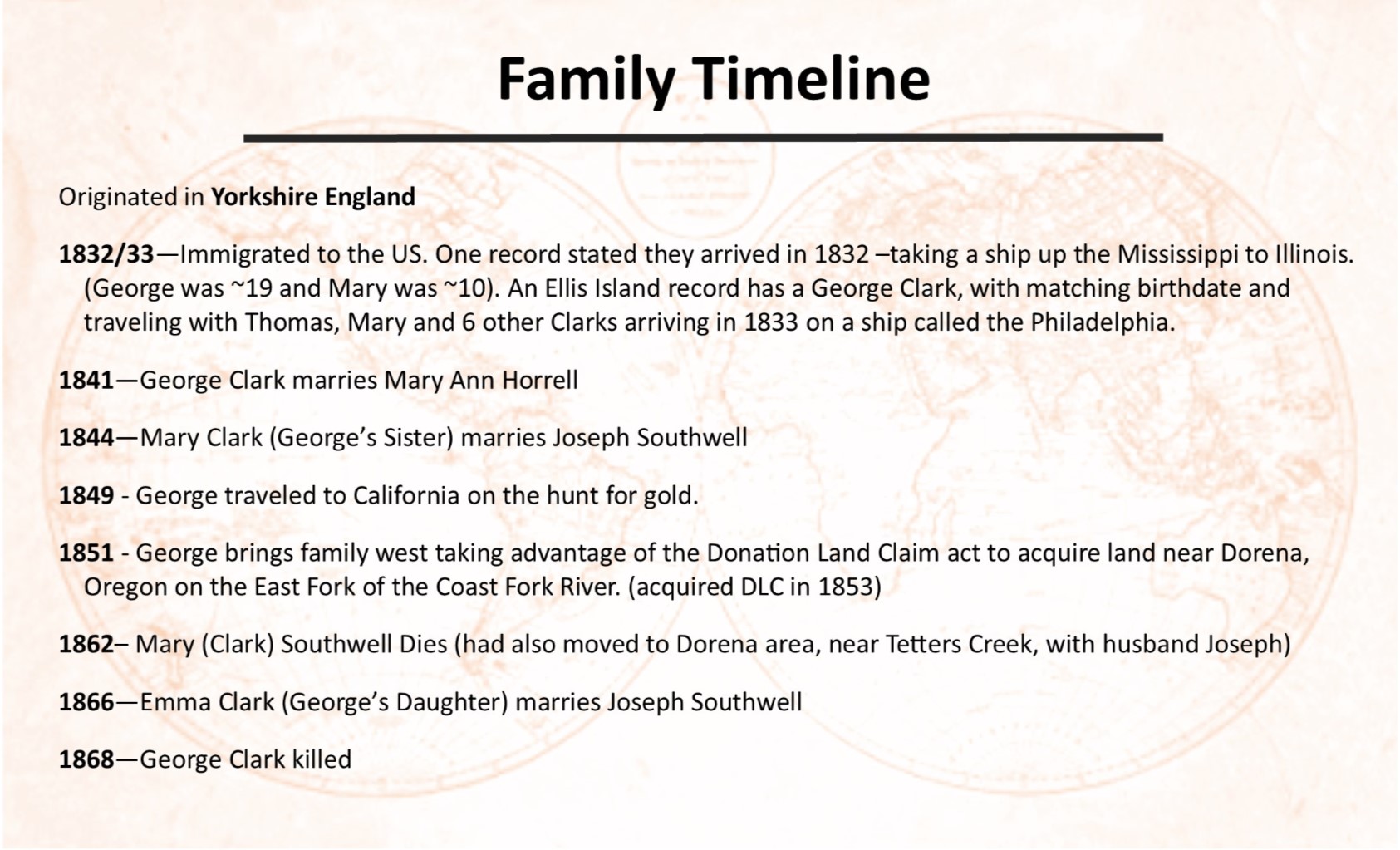
March 27, 1868
Note: The bulk of the Clarks side of the story is told by two children, 11 and 9, who watched as their father was killed. It is also worth mentioning that other than who fired the fatal shot, their stories remain consistent between the Grand Jury testimony and the trial, and the few pieces of physical evidence mentioned in transcripts appear to support their version of events.
The two Clark boys testify that:
- The sheep were on their brother Charlie’s land, not the Southwell’s
- Their father was not aggressive during the incident nor did he point his gun at any of the Southwell men
- Their father was running away from the Southwells when he was shot from behind
- They heard a second shot as they were running away, but by then they were too far away to see anyone or know who shot at what
Trial Transcripts
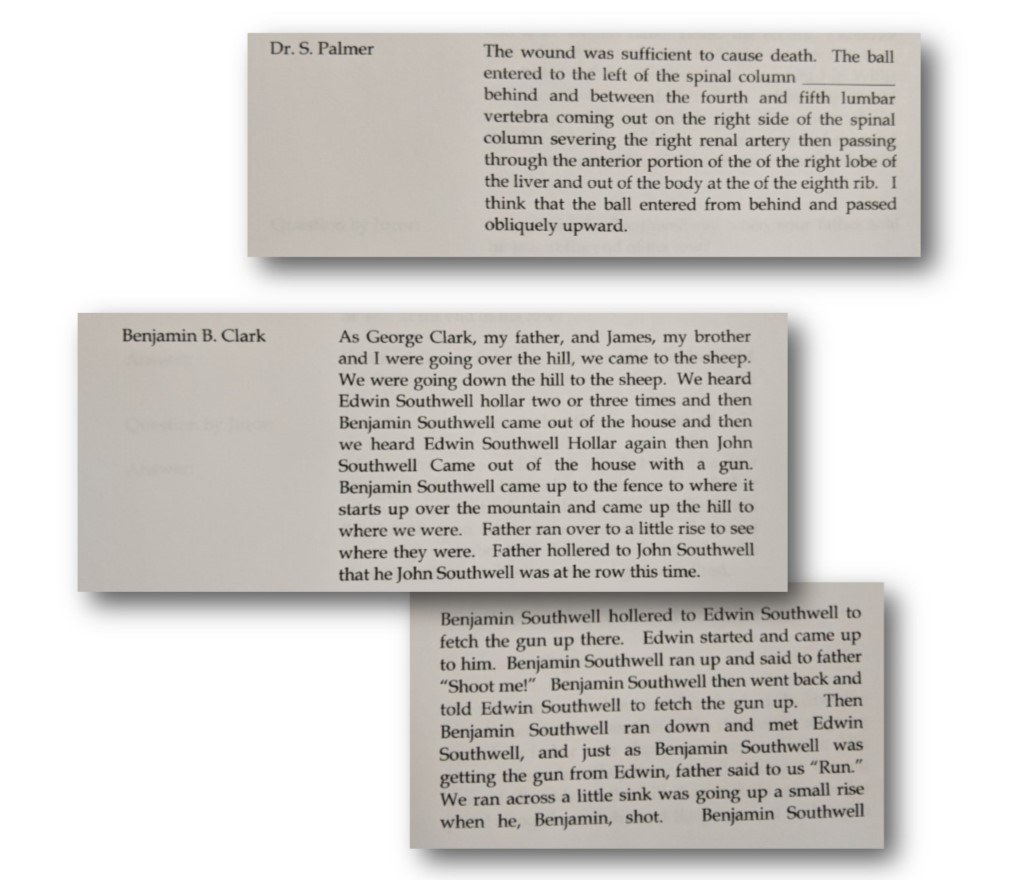
The Incident—The Southwell Side
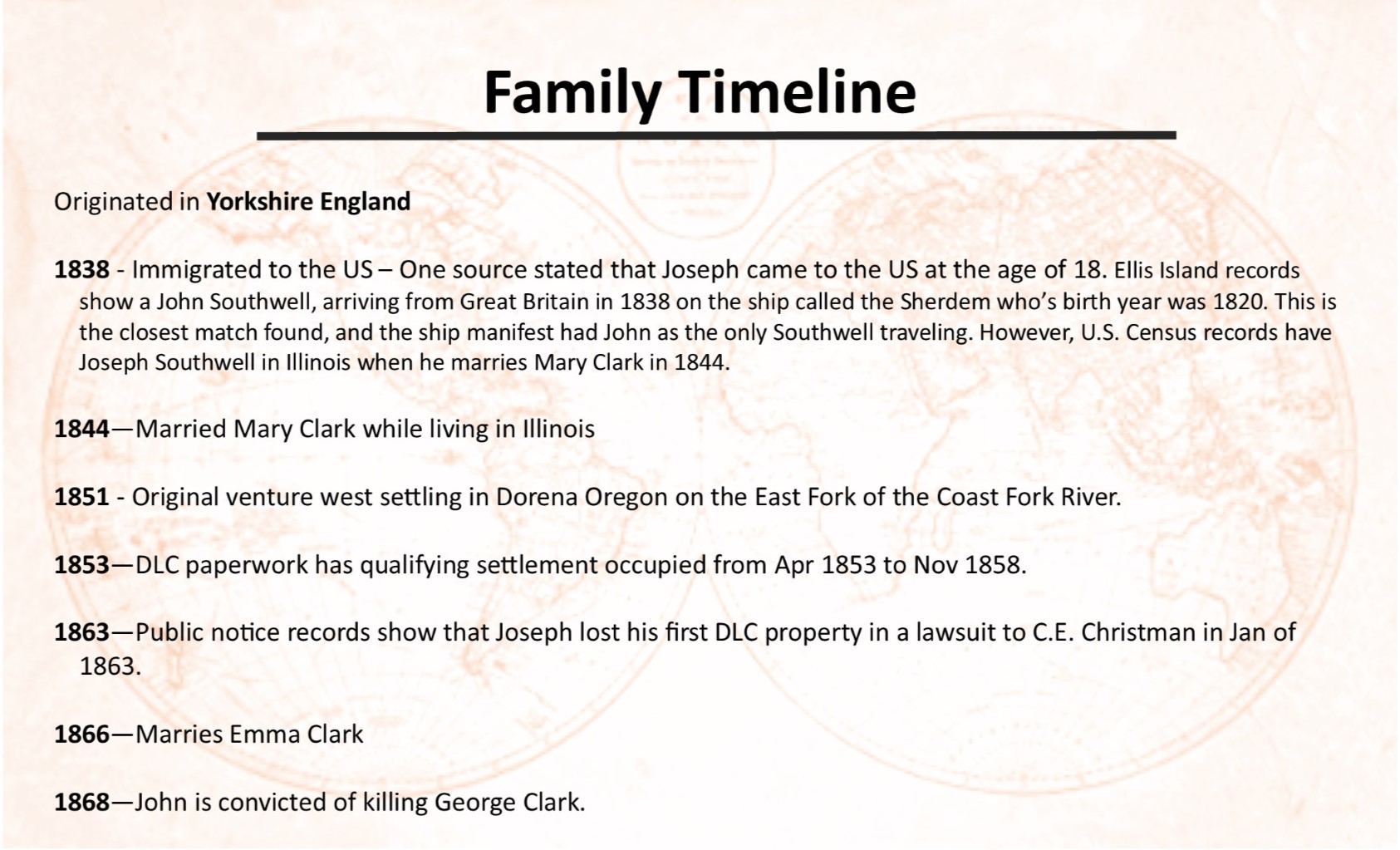
March 27, 1868
The Southwell family contend that:
- George was trespassing on their land
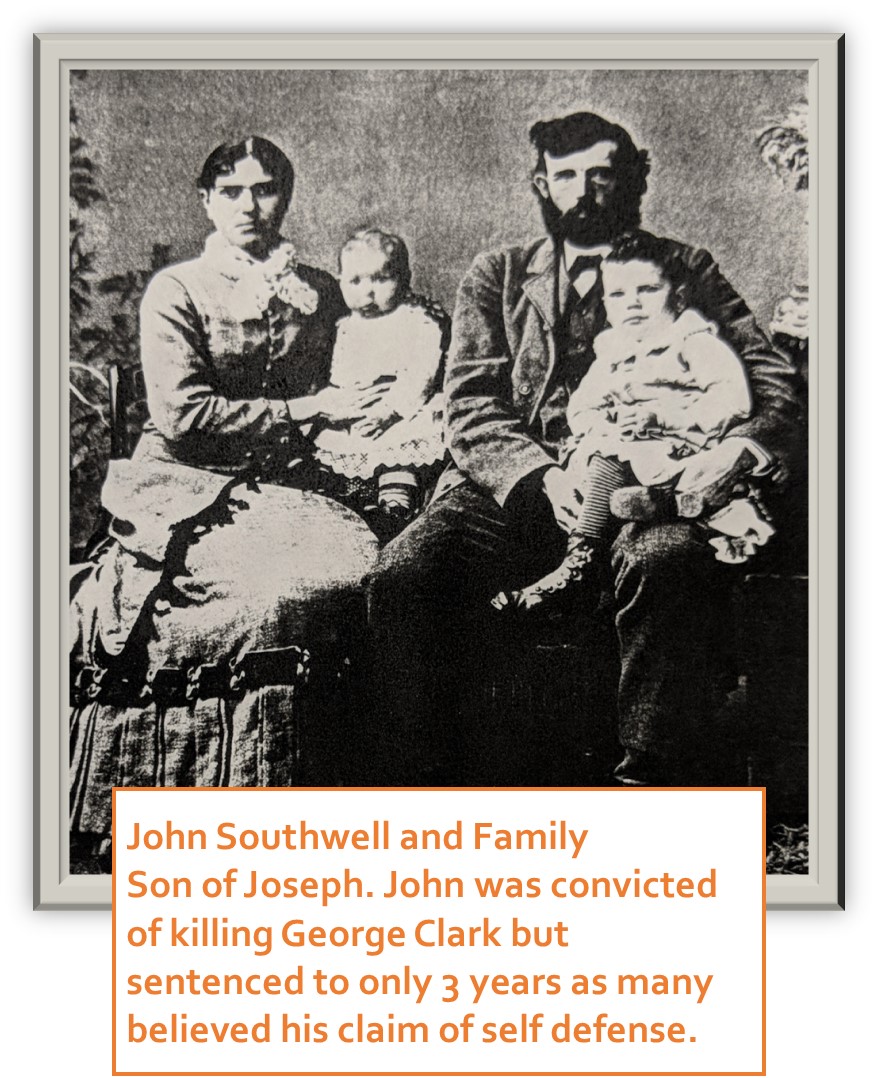
- He became aggressive when confronted
- George aimed a rifle at Benjamin
- John does not deny shooting, but claims it was in defense of himself and his family. He stated that as he fired George turned away resulting in the bullet entering his back.
The trial transcripts do not show any statements or testimony from the Southwells including John. His statements were given to the Grand Jury prior to the trial. However several people testified about what John told them directly after the shooting.
Trial Transcripts
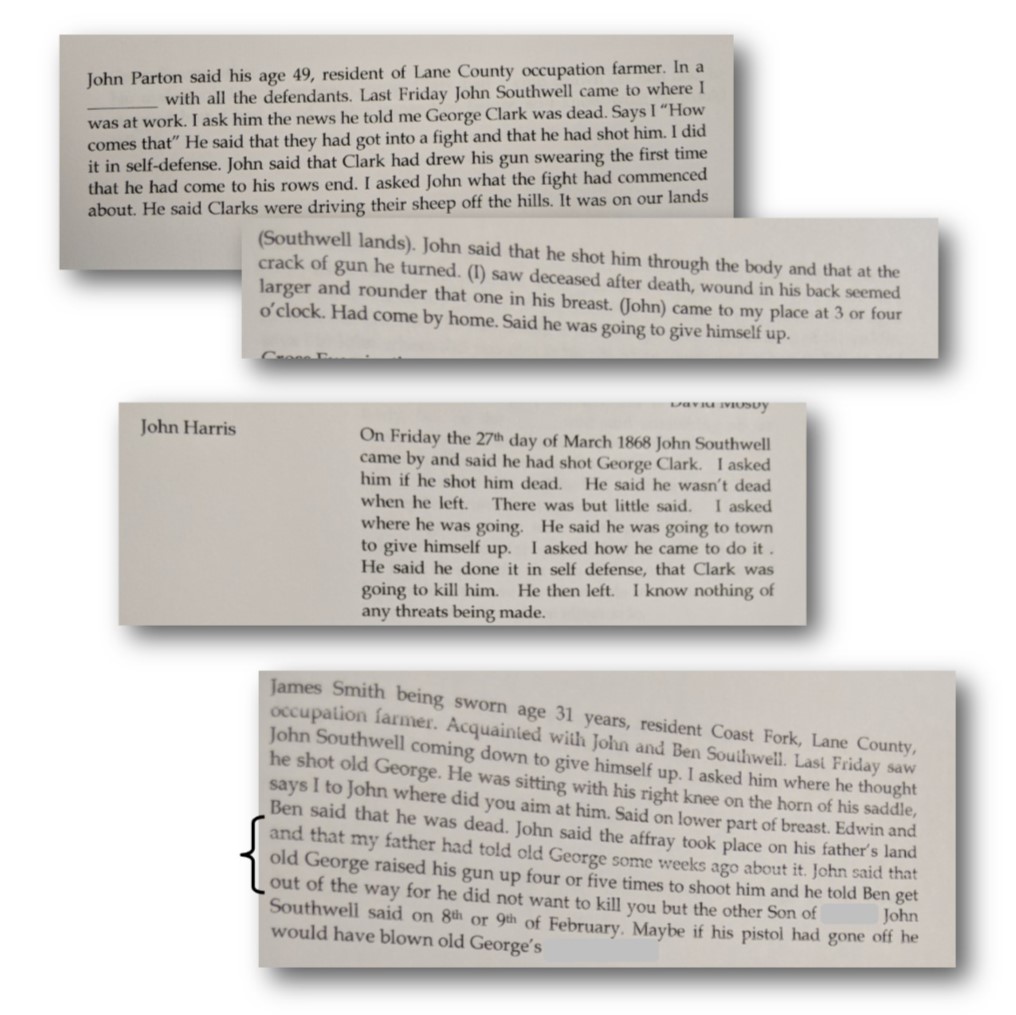
More to the Story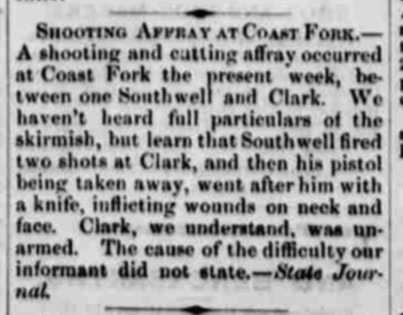
Here (right) is a story published on March 14, 1868, in the Oregon Sentinel newspaper. This is nearly 2 week prior to Mr. Clark’s death. This fight included Mr. Clark getting shot at twice and stabbed a number of times. Interestingly nowhere in the recorded testimony does anyone talk about this incident. Some people testified that they were unaware of ill will between the families, though others testified to the prior bad blood.
Common myths that have been reported:
- Only George and two of the Southwell boys were present.
- George angered the boys by spitting on them. No such statement shows up on any of the testimony or accounts recorded at the time.
- The feud was between a Union soldier’s family and a Confederate soldier’s family still fighting about the war. (The civil war began in 1861, both families were already living in Oregon at that time. There is no indication that either family went east to fight on either side.)
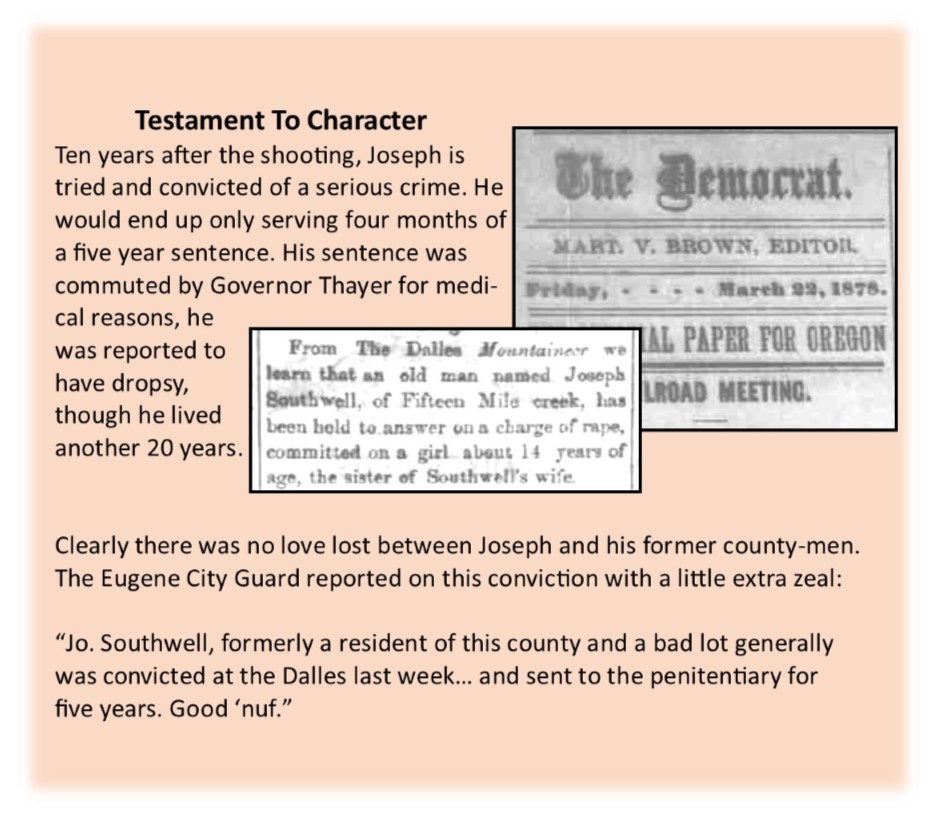 (Left) Joseph finds himself in trouble with the law again.
(Left) Joseph finds himself in trouble with the law again.
(Below) Recollection of Burn Veatch printed in the Cottage Grove Sentinel, Aug 31, 1915
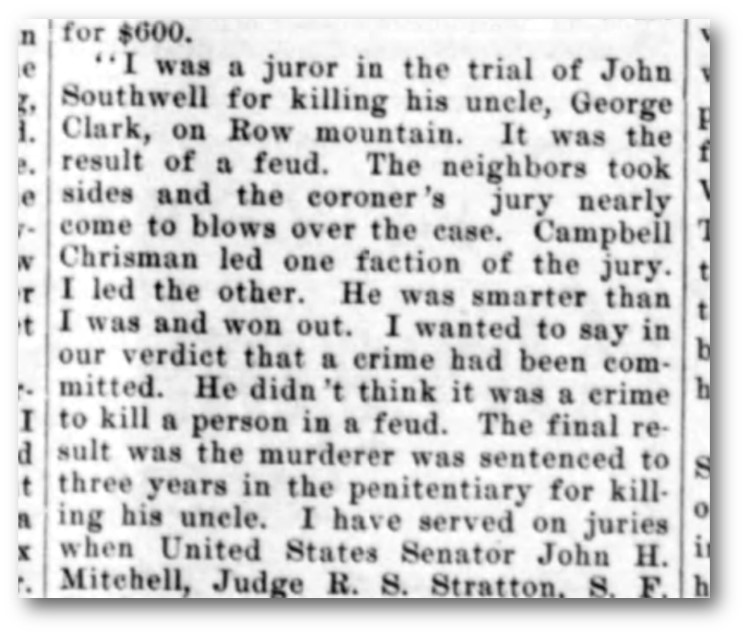
(Below)This vista looks down on the Community of Dorena. Taken around 1900, this was long before the Dam and Dorena Lake. The community was in the valley along the river that become known as the Row River. You can see the river lined with trees, the farmland, some homes and the Railroad. The column of smoke coming from the center is likely from a mill.
